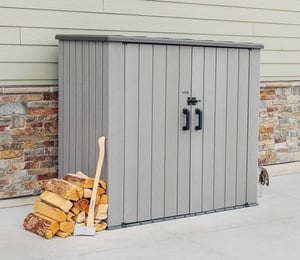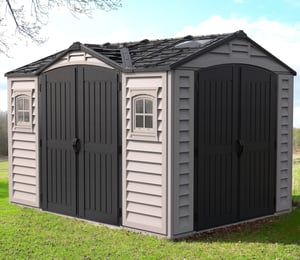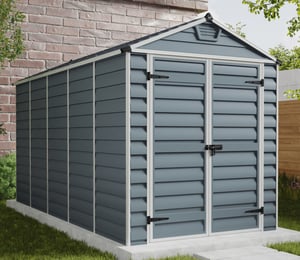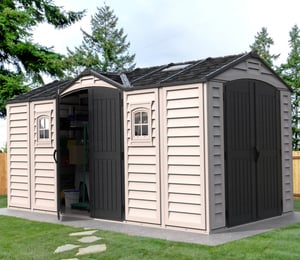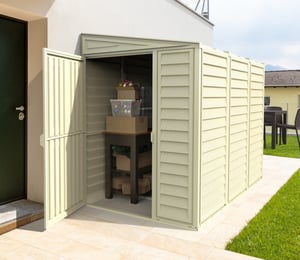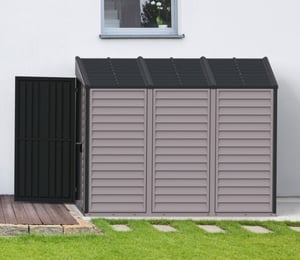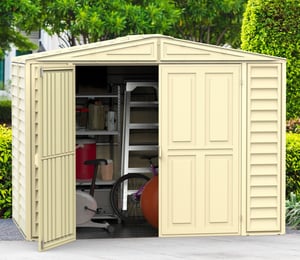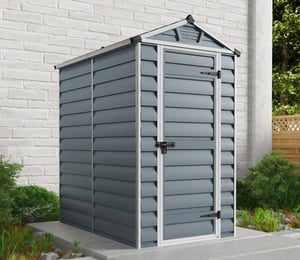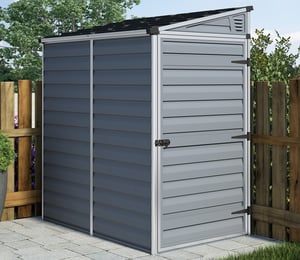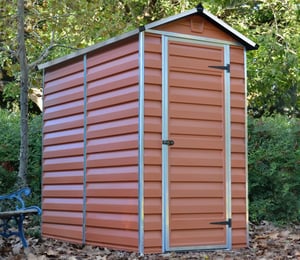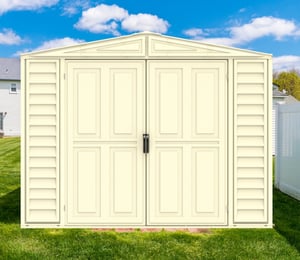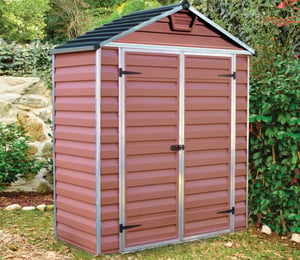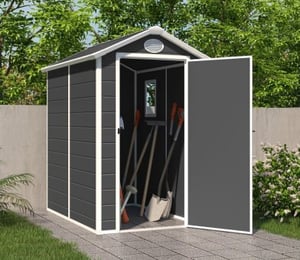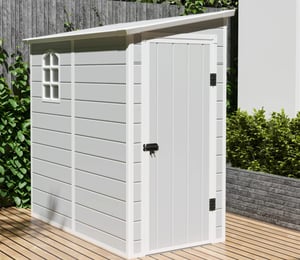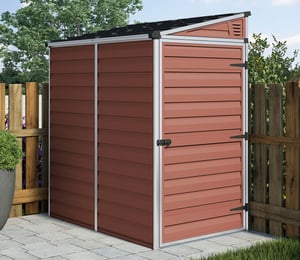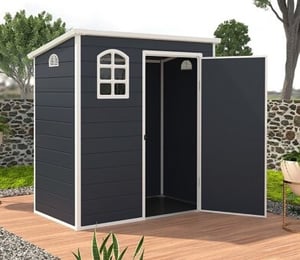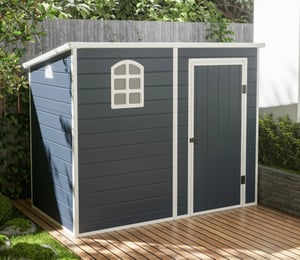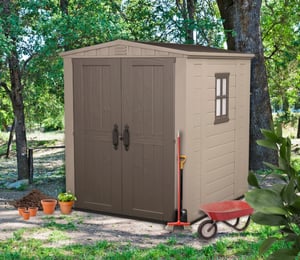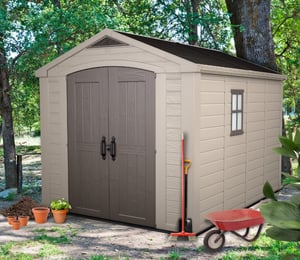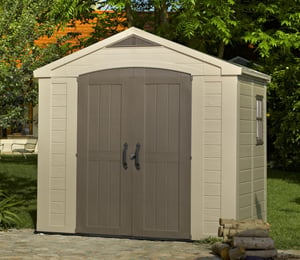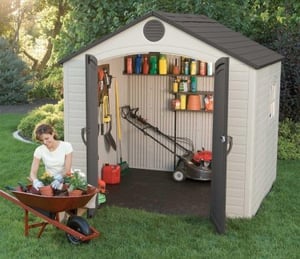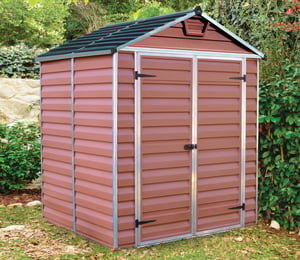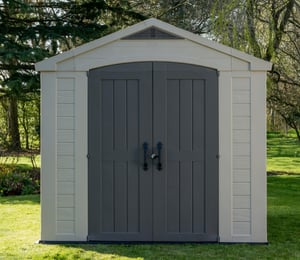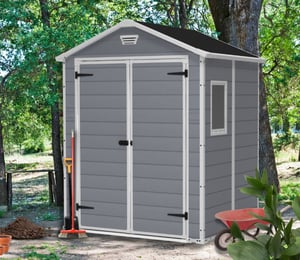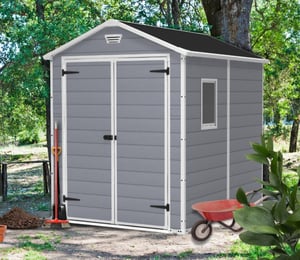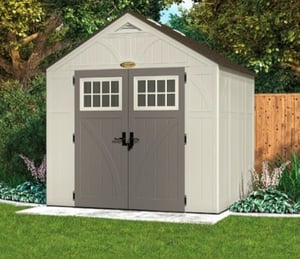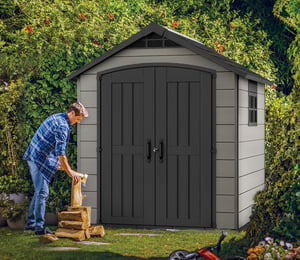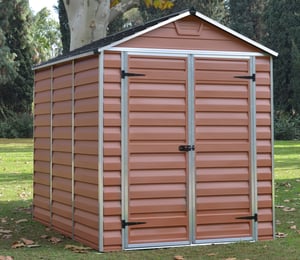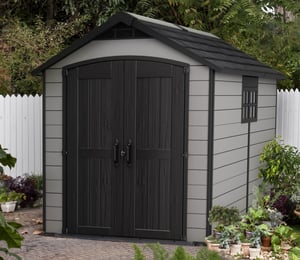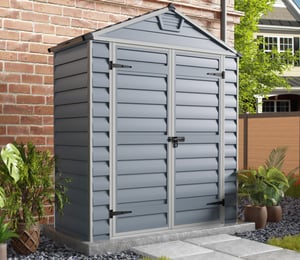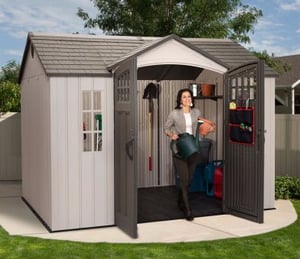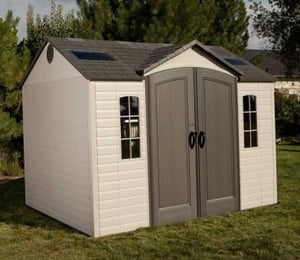Why choose a plastic shed?
- Low Maintenance: Unlike wood or metal sheds, plastic sheds require very little maintenance. You won't have to worry about rust, rot, or painting; a simple wash with soapy water is enough to keep your shed looking brand new.
- Durability: Our heavy-duty plastic garden sheds are built to last. They are weather-resistant, ensuring they stand up to the elements, be it rain, snow, or harsh sunlight.
- Easy Assembly: Most of our plastic sheds come with easy-to-follow assembly instructions. You can set them up yourself without the need for professional help, saving you time and money.
- Cost-Effective: Compared to other materials like wood or metal, plastic garden sheds offer value for money. They are affordable, yet durable, providing excellent long-term value.
- Environmentally Friendly: Many plastic sheds are made from recyclable materials, making them an eco-friendly choice for those looking to minimise their carbon footprint.
Whatever your choice, a plastic shed will give years of service and valuable storage space with virtually no maintenance required, a fantastic investment that saves you money, time, and will result in a very versatile addition to your garden. Buy online today at GardenSite to get a high-quality plastic shed delivered direct to your home at the cheapest price. We also try to price match where possible, so if you've found one of our plastic sheds cheaper elsewhere, contact us for a price match.
Plastic shed brands to buy
Keter, Lifetime, Suncast, and Palram Canopia are just some of the plastic shed brands you’ll find on GardenSite, using advanced materials to ensure that your store or workshop provides effective protection for everything and everybody inside. We've handpicked these brands and manufacturer's as from our lengthy experience in the shed industry, they all offer practical storage solutions at cheap prices.
There’s no doubt the various types of plastics that are used today are impact resistant and highly durable, unaffected by UV rays, they will not fade or crack. Lifetime are a very popular plastic shed range, imported from the USA - built from high-density polyethylene for double walled insulation, backed by a heavy-duty powder coated steel frame. Whilst the Palram range gives customers a low cost plastic shed, favouring polycarbonate panels for their stores, it's good to know that they're also built around metal frames to add strength and range from storage units for small items to large buildings for optimal storage space. All with a special ‘skylight’ roof that introduces plenty of light to the interior so that you can work in a spacious and light area.
Whatever your choice, a plastic shed will give years of service with virtually no maintenance required, saving you money, time and trouble whilst adding a versatile addition to your garden.
Top 5 FAQs on plastic sheds
Q: How difficult is it to assemble a plastic shed?
A: Most of our plastic sheds are designed for easy assembly. Usually, all you'll need is a flat, hard-standing surface, a couple basic tools and a little bit of time.
Q: Are plastic garden sheds secure?
A: Yes, our range includes sheds with lockable doors for added security. However, if you're storing high-value items, you might consider additional locks or a security system such as a shed alarm.
Q: How do plastic sheds fare in extreme weather conditions?
A: Heavy-duty plastic garden sheds are designed to withstand various weather conditions. They are generally resistant to rot, rust, and decay, which makes them durable throughout the seasons.
Q: Can I customise the look of my plastic shed?
A: While plastic sheds may not be as easy to customise as wooden sheds being as you don't need to treat or paint them annually, you can still add shelves, hooks, and storage accessories to make the most of your space.
Q: Are your plastic sheds UK compliant in terms of quality and standards?
A: Absolutely, all our plastic sheds meet stringent UK quality and safety standards, ensuring you get a reliable, durable product.
Browse through our collection of plastic sheds for sale, ready to buy online on our secure website and backed by thousands of customer reviews. So whether you're looking for simple storage solutions or heavy-duty plastic garden sheds, we have something for everyone to enhance their outdoor space. Don't hesitate to reach out to our customer service team on the phone 0121 355 7701 for more information, we're here to help, whether you're shopping online or on the phone.
Why should I choose GardenSite to buy a plastic shed from?
We don't want to bore you with a list of generic reasons as to why you should buy your plastic shed from GardenSite.co.uk, we'd rather state real genuine reasons and facts as to why shopping with us is safe, secure and trusted. We've been online since 1999, that's over 20 years of being an ecommerce retailer, whilst our brick and mortar stores have been going since 1952 - that's over 60 years in the gardening industry!
As an independent retailer (which you can read more about on our about us page), we're proud of our lengthy service, but don't just take our word for it. You can find independent reviews about us and our products on third party review sites including; Google reviews, Trustpilot and Houzz.

